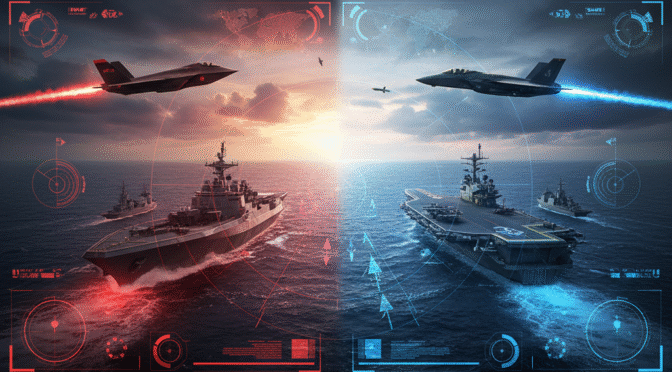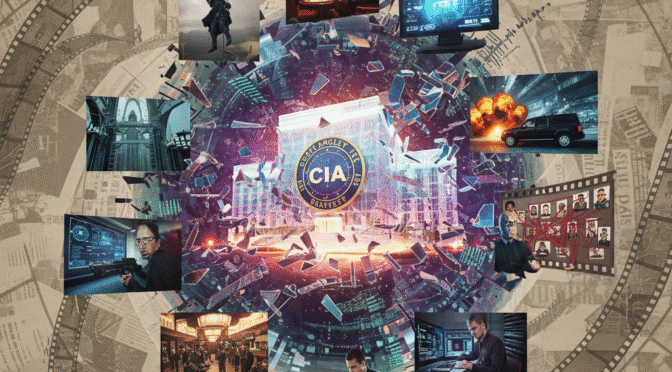This report provides a detailed technical and market analysis of the evolution of the shotgun slug. The development of the slug was a direct engineering response to a significant performance gap inherent in early smoothbore shotgun ammunition. Standard buckshot loads, while devastating at close quarters, suffered from dramatic pattern dispersal, limiting their effective range to under 30 yards. Conversely, single round balls, or “pumpkin balls,” were notoriously inaccurate beyond 50 yards due to a complete lack of in-flight stabilization. This created a critical capabilities void for both hunters and tactical users.
The first successful solutions to this problem emerged with two foundational full-bore designs: the German Brenneke slug (1898) and the American Foster slug (1931). Though born from different design philosophies, both achieved aerodynamic stability in smoothbore barrels, reliably extending the shotgun’s effective range to the 75-100 yard mark. The next paradigm shift came with the concurrent development of saboted projectiles and fully rifled shotgun barrels. This combination introduced gyroscopic stabilization, transforming the shotgun platform into a short-range rifle capable of accurate fire out to 200 yards.
This technological evolution has created a bifurcated market. On one hand, the civilian hunting market, largely driven by regulations mandating shotgun use in densely populated areas, has pushed the development of increasingly accurate and powerful saboted slugs. On the other hand, the tactical market for law enforcement and military use has leveraged slug technology for extended range, enhanced barrier penetration, and specialized applications. The modern shotgun platform’s unparalleled versatility, capable of firing everything from lethal hunting projectiles to specialized breaching and less-lethal rounds, is a direct result of the continuous innovation of the single-projectile slug.
1.0 The Performance Gap: The Problem Slugs Were Engineered to Solve
To understand the genesis of the shotgun slug, one must first analyze the inherent limitations of the ammunition available for smoothbore firearms prior to its development. The slug was not an incremental improvement but a purpose-built solution to a well-defined performance deficiency.
1.1 The Era of the Smoothbore: From Blunderbuss to “Scattergun”
The shotgun’s lineage traces back to early smoothbore firearms like the blunderbuss, which were valued for their ability to project a wide pattern of shot at close range.1 By the late 19th and early 20th centuries, the breechloading shotgun, or “scattergun,” had become a common tool for hunting birds and small game.2 Its primary design function was to fire a shotshell containing multiple small pellets, increasing the probability of hitting fast-moving targets.2 The development of the self-contained shotshell—evolving from early paper and brass hulls with black powder to modern plastic cases with efficient smokeless powders—created a reliable and versatile ammunition platform.3 However, this platform was fundamentally optimized for projecting a pattern of shot, a design that presented significant limitations when engaging larger targets at distance.
1.2 The Limitations of Buckshot: Range, Patterning, and Terminal Ballistics
For engaging larger targets, buckshot was the standard load. A single shell could deliver eight to twelve lead balls, each roughly the size of a pistol bullet, into a target with one pull of the trigger, making it an immensely devastating close-quarters load.6 However, this effectiveness was confined to a very narrow engagement window.
The primary limitation of buckshot is pattern spread. As a general rule, a buckshot pattern from a cylinder-bore shotgun spreads approximately one inch for every yard of travel.6 This means that while the pattern may be only a few inches wide at contact distance, it can be over 20 inches wide at 20 yards. Beyond this range, pellets begin to miss a human-sized target, and by 30 yards, a shooter would be fortunate to place half the payload on target.6
Terminal performance could also be inconsistent. While a tight cluster of pellets in a vital area is a definitive fight-stopper, a spread-out pattern at longer ranges may only inflict multiple shallow wounds.6 If major organs or the central nervous system are not struck, bleeding can be slow, creating a significant risk of wounding game animals that later escape and perish unethically.7 A historical military attempt to mitigate these issues was the “buck and ball” load, which combined a single large-caliber musket ball with three or more buckshot pellets. This provided both the spread of shot for close-range encounters and the mass of a single projectile for volley fire at ranges approaching 100 yards, but it was a compromise, not a precision solution.8
1.3 The Inaccuracy of the Round Ball: The “Pumpkin Ball” Problem
Before the advent of modern slugs, the only option for firing a single projectile from a shotgun was a simple, spherical lead ball, colloquially known as a “pumpkin ball”.10 While heavier than a buckshot pellet, the round ball suffered from crippling inaccuracy.
A smooth, spherical projectile fired from a smoothbore barrel has no stabilizing forces acting upon it. It is not aerodynamically shaped to fly nose-forward, nor is it spun by rifling to achieve gyroscopic stability. The result is a highly unpredictable flight path, often described as a “knuckleball” effect, which becomes progressively worse with distance.11 While a round ball might be acceptably accurate at 25 yards, its point of impact becomes entirely unpredictable at 50 yards and beyond.11 This rendered the smoothbore shotgun with a round ball a weapon of last resort for large game, far inferior to the rifled muskets that had already demonstrated the superiority of spin-stabilized projectiles.12
The combination of these factors created a significant capabilities gap. Buckshot was a reliable tool inside of 30 yards. Rifles were effective well beyond 100 yards. In the critical engagement window between 30 and 75 yards, the shotgun offered no reliable, accurate projectile. A hunter facing a deer at 60 yards or a lawman confronting a threat across a street was equipped with a tool that was ill-suited for the task. This “75-Yard Problem” established a clear engineering imperative for a new type of ammunition: a single, stabilized projectile that could be fired accurately from a smoothbore shotgun.
2.0 The Genesis of the Modern Slug: Early Full-Bore Innovations
The first two successful solutions to the accuracy problem of single projectiles in smoothbore shotguns came from two different continents and were driven by distinct motivations. Yet, both arrived at the same fundamental principle: aerodynamic stabilization.
2.1 The Brenneke Slug (1898): A European Solution for Humane, Effective Hunting
The first truly effective modern shotgun slug was developed in Germany in 1898 by the brilliant gun and ammunition designer Wilhelm Brenneke.10 Brenneke’s work was not driven by military application but by an ethical imperative. As an avid hunter, he was deeply dissatisfied with the ammunition of his day, which he felt was underpowered and led to the wounding and suffering of game animals.15 His goal was to engineer a projectile with vastly superior accuracy and stopping power to ensure a quick, humane harvest.15
The resulting design was a masterpiece of ballistic engineering. The Brenneke slug is a solid, full-bore lead projectile with two key features. First, it has a wad—originally made of felt or cellulose fiber, now often plastic—attached to its flat base with a screw.10 This attached wad remains with the slug in flight and acts as a tail, creating drag at the rear of the projectile. This drag stabilization, much like the fletching on an arrow, guarantees the slug flies nose-forward and prevents it from tumbling.10 Second, the slug has a series of angled ribs cast onto its exterior. These ribs allow the solid projectile to safely swage, or compress, as it passes through the narrow constriction of a shotgun’s choke without damaging the barrel.10 Because it is a solid projectile made of a hard lead alloy, the Brenneke slug is renowned for its ability to penetrate deeply through bone and muscle with minimal deformation, making it a favored choice for tough, heavy game like wild boar and for defense against dangerous animals.16
2.2 The Foster Slug (1931): An American Answer for the Everyman Hunter
More than three decades after Brenneke’s invention, an American solution emerged from a very different context. The Foster slug, often called the “American Slug,” was invented by Karl M. Foster in 1931.14 Its origins were socio-economic, born from the hardships of the Great Depression. Foster sought an inexpensive and effective way to turn the common, affordable smoothbore shotgun into a capable deer rifle for families struggling to put food on the table.18
The technical design of the Foster slug was heavily inspired by the revolutionary Minié ball of the mid-19th century.10 Its defining characteristic is a deep hollow cavity in the base, which places the slug’s center of mass far forward, close to its nose.10 This “weight-forward” design provides aerodynamic stability through a different mechanism than the Brenneke. If the slug begins to yaw or tumble in flight, aerodynamic forces acting on the lighter, hollow rear push it back into alignment, creating a self-stabilizing effect much like a badminton shuttlecock.18 Made of a softer lead than the Brenneke, the Foster slug also features exterior ribs (often misleadingly called “rifling”) that serve the same purpose: allowing the slug to safely pass through a choke.19
After perfecting his design, which he initially made by hand in his garage, Foster presented it to Remington, who surprisingly passed on the idea.14 He then took it to Winchester, who recognized its potential and brought the first factory-loaded Foster slugs to the retail market in 1936. Remington, realizing its error, introduced its own version just one year later.14
These two foundational designs represent divergent engineering paths to a convergent solution. Brenneke, focused on terminal performance for tough European game, created a solid, assembled projectile (slug, wad, and screw) that achieves stability via an attached drag-stabilizing tail. Foster, focused on affordability for American deer hunters, created a monolithic projectile whose stability is derived purely from its geometry. This resulted in a classic performance trade-off that persists today: the Brenneke design generally offers superior penetration, while the simpler, softer Foster design is less expensive and expands more readily on lighter game. Both, however, successfully solved the “75-Yard Problem,” transforming the smoothbore shotgun into a viable tool for hunting big game.
3.0 A Paradigm Shift: The Advent of Saboted Slugs and Rifled Barrels
The development of the Brenneke and Foster slugs was a revolutionary step, but it was one that operated within the physical constraints of a smoothbore barrel. The next great leap in slug performance would require a fundamental change to the firearm itself, moving from the principles of aerodynamics to the superior science of gyroscopic stabilization.
3.1 The Sabot Concept: Unlocking Rifle-Like Performance
The key to this transformation was the sabot (pronounced “SAY-bo”), a French term for a type of wooden shoe.22 In ballistics, a sabot is a lightweight carrier, typically made of plastic, that surrounds a projectile smaller than the bore diameter—a sub-caliber projectile.23 The sabot serves several critical functions: it fills the bore to create an effective gas seal behind the projectile, and its outer surface engages the rifling in the barrel.23 As the sabot and projectile exit the muzzle, aerodynamic pressure causes the sabot petals to peel away and discard, leaving the sub-caliber projectile to fly to the target unimpeded.18
This design offers a profound engineering advantage. By using a smaller-diameter projectile, designers can create a slug with a much more aerodynamic shape and a higher ballistic coefficient than a blunt, full-bore projectile.25 A higher ballistic coefficient means the projectile is less affected by air resistance, allowing it to maintain its velocity for a longer time, fly a flatter trajectory, and deliver more energy at extended ranges.26
3.2 The Symbiotic Relationship with Rifled Barrels
The sabot concept is inextricably linked to the use of a fully rifled shotgun barrel. While Foster and Brenneke slugs are designed for smoothbores, sabot slugs are designed exclusively for rifled barrels.23 The plastic sabot is what grips the lands and grooves of the rifling, imparting a rapid spin to the projectile within. This gyroscopic stabilization is far more effective and consistent than the aerodynamic stabilization of full-bore slugs.
This creates a critical point of incompatibility. Firing a traditional lead Foster or Brenneke slug through a rifled barrel provides no accuracy benefit and will quickly and severely foul the rifling with lead deposits, degrading performance.18 Conversely, firing a sabot slug through a smoothbore barrel is a recipe for inaccuracy. Without the rifling to impart spin, the sub-caliber projectile will tumble uncontrollably upon leaving the muzzle.28 The development of rifled shotgun barrels and sabot slugs was therefore a concurrent and symbiotic process; the barrel was created to unlock the potential of the ammunition, and the ammunition was designed to leverage the capabilities of the barrel.19
3.3 Ballistic Superiority: Trajectory, Velocity, and Extended Range
The combination of a saboted slug and a rifled barrel effectively turned the shotgun into a large-caliber, short-to-medium range rifle. The performance gains were immense. While a well-sighted smoothbore shotgun with Foster slugs is considered a 75- to 100-yard firearm, a dedicated rifled-barrel shotgun firing modern sabot slugs can achieve consistent accuracy out to 200 yards and beyond.19 The projectiles themselves can be engineered like modern centerfire rifle bullets, often incorporating polymer tips for improved aerodynamics (like the Remington AccuTip) or being constructed from monolithic copper for deep penetration and high weight retention.23
This technological leap created a fundamental bifurcation in the shotgun market and its identity. Previously, a shotgun was a single, versatile firearm capable of firing all types of shells through its smooth barrel. The advent of the sabot/rifled barrel system forced a choice. A user could maintain a general-purpose smoothbore or invest in a specialized “slug gun” with a dedicated rifled barrel. This gave rise to a new class of shotguns—often heavy-barreled bolt-actions or pump-actions with rifle-style sights or scope mounts—that were shotguns in name and regulation only. In function and performance, they were rifles, a development driven almost entirely by the desire of hunters in “shotgun-only” states to achieve rifle-like performance.
4.0 A Taxonomy of Modern Shotgun Slugs
The modern market for shotgun slugs is diverse, with designs optimized for different firearms, ranges, and applications. They can be broadly categorized into full-bore slugs for smoothbore barrels, sub-caliber slugs for rifled barrels, and highly specialized projectiles.
4.1 Full-Bore Slugs (For Smoothbore Barrels)
These slugs are designed to the full diameter of the shotgun’s bore and rely on aerodynamic stabilization.
- Brenneke-Type: This classic design remains a top choice for applications requiring deep penetration. It is a solid lead or hard lead-alloy projectile with a wad attached to the base that acts as a tail for drag stabilization. Its solid construction ensures high weight retention and a devastating wound channel, making it a preferred option for hunting tough game or for defense against dangerous animals like bears.13
- Foster-Type (“Rifled Slug”): This is the most common and generally most affordable type of shotgun slug in the United States. It is made of soft lead and features a deep hollow in the base, creating a weight-forward design for aerodynamic stability. It is an effective projectile for deer-sized game within 100 yards.13
- Wad Slugs: This category represents an evolution of the Foster design, aiming to improve accuracy by enhancing the gas seal and the way the slug centers in the barrel. The most prominent example is Federal’s TruBall system. This design places a hard polymer ball into the hollow cavity at the base of a Foster-style slug. This ball, pushed by the wad, forces the slug to center perfectly in the bore before it exits the barrel, resulting in dramatically more consistent and tighter groups than standard Foster slugs.20
4.2 Sub-Caliber Slugs (For Rifled Barrels)
These slugs are smaller than the bore diameter and require a rifled barrel to function correctly.
- Saboted Slugs: This is the pinnacle of shotgun slug technology for accuracy and range. The projectile, which often resembles a large pistol or rifle bullet, is held in a plastic sabot that engages the barrel’s rifling to impart a gyroscopic spin.18 This spin stabilization provides superior accuracy, a flatter trajectory, and extended effective range. The projectiles can be made from a variety of materials, including lead, copper, and brass, and often feature advanced aerodynamic designs like polymer tips to maximize their ballistic coefficient.23
4.3 Specialized Slugs
Beyond conventional hunting and tactical slugs, a range of projectiles exist for highly specific tasks. These include frangible, breaching, and less-lethal slugs, which are designed to fundamentally alter the shotgun’s application on a shell-by-shell basis. These will be explored in detail in Section 7.0.
The following table provides a summary of the primary slug categories for quick comparison.
| Slug Type | Core Design Principle | Intended Barrel | Typical Max Effective Range | Primary Application |
| Foster (“American Rifled”) | Aerodynamic Stability (Weight-Forward) | Smoothbore | ~75-100 yards | General Purpose Hunting (Deer) |
| Brenneke (“European”) | Aerodynamic Stability (Drag-Stabilized) | Smoothbore | ~100 yards | Hunting Tough/Dangerous Game |
| Wad Slug (e.g., TruBall) | Enhanced Gas Seal & Centering | Smoothbore | ~100-125 yards | Precision Smoothbore Hunting |
| Sabot Slug | Gyroscopic Stability (Spin-Stabilized) | Fully Rifled | ~150-200+ yards | Long-Range Hunting (Rifle Replacement) |
5.0 Ballistic & Terminal Performance Analysis
A quantitative comparison of slug types reveals the significant performance gains achieved through successive design innovations. The differences in external ballistics (how the slug flies) and terminal ballistics (what the slug does on impact) are stark.
5.1 External Ballistics: Comparing Velocity, Energy, and Trajectory
The primary limitation of traditional full-bore slugs is their poor aerodynamic shape, which results in a low ballistic coefficient and rapid energy loss.
- A standard 1-ounce (438-grain) 12-gauge Foster slug, such as the Remington Slugger, leaves the muzzle at approximately 1,600-1,680 feet per second (fps) with around 2,500 foot-pounds (ft⋅lbs) of muzzle energy.13 However, due to high air resistance, it slows quickly, losing more than half of its kinetic energy by the 100-yard mark.13 Its trajectory is decidedly arched, often described as being like a “thrown pumpkin,” requiring significant holdover for shots beyond 75 yards.31
- Modern saboted slugs offer vastly superior external ballistics. A 385-grain Remington AccuTip 12-gauge sabot slug exits the muzzle at a blistering 1,850-1,900 fps, generating over 2,900-3,000 ft⋅lbs of energy.35 Because its projectile is more streamlined, it retains velocity and energy far more efficiently. The AccuTip still carries over 2,300
ft⋅lbs of energy at 100 yards—nearly as much as the Foster slug had at the muzzle.35 This results in a much flatter trajectory, allowing a hunter to hold dead-on a target out to 150 yards with minimal drop.35
5.2 Terminal Ballistics: Penetration vs. Expansion
The construction of a slug dictates its performance upon impact with a target.
- Foster Slugs: Made of soft lead with a hollow base, these slugs are designed to expand dramatically upon impact. This rapid expansion creates a wide wound channel and transfers energy quickly, which is highly effective on thin-skinned medium game like whitetail deer. However, this same characteristic means they often fragment and offer limited penetration, making them a poor choice for tougher animals or for shooting through intermediate barriers.20
- Brenneke Slugs: Constructed from a harder lead alloy and featuring a solid design, Brenneke slugs are engineered to resist deformation. They expand very little, if at all, ensuring the slug maintains its mass and momentum to drive deep into a target.16 Independent ballistic gelatin tests have shown Brenneke slugs can achieve penetration depths exceeding 34 inches, making them exceptionally well-suited for dangerous game where breaking heavy bone and reaching deep vitals is paramount.16
- Saboted Slugs: These projectiles can be engineered for specific terminal effects, much like modern rifle bullets. Many designs, like the Remington AccuTip, are bonded and feature spiral nose cuts to initiate controlled expansion. They are designed to mushroom perfectly while retaining over 95% of their original weight, combining deep penetration with a massive wound channel for devastating effect on game.32
The following table provides a direct comparison of representative loads from each major slug category.
| Load Type | Muzzle Velocity (fps) | Muzzle Energy (ft-lbs) | Velocity @ 100 yds (fps) | Energy @ 100 yds (ft-lbs) |
| Remington 1oz Slugger (Foster) | 1,680 | 2,630 (est.) | ~1,100 | ~1,180 (est.) |
| Federal 1oz TruBall (Wad) | 1,600 | 2,485 | 997 | 970 |
| Brenneke 1 1/8oz Classic Magnum | 1,510 | 2,460 | ~1,100 | ~1,300 (est.) |
| Remington 385gr AccuTip (Sabot) | 1,900 | 3,086 | 1,656 | 2,344 |
6.0 Application & Market Analysis: A Tale of Two Use Cases
The development and diversification of shotgun slugs have been driven by the distinct needs of two primary markets: civilian hunting and tactical/defensive applications. While there is technological crossover, the end-use requirements have created parallel evolutionary paths.
6.1 The Hunter’s Tool: Slugs in the Field and the Impact of Regulation
The single largest driver of the modern shotgun slug market in North America is hunting regulation. In many densely populated states, particularly in the Midwest and Northeast, hunters are restricted to using shotguns, muzzleloaders, or, more recently, straight-walled cartridge rifles for hunting deer.13 These “shotgun-only zones” were established due to concerns that high-velocity, bottlenecked rifle cartridges could travel for miles, posing a safety risk in settled areas.39
Historically, these regulations also served as a wildlife management tool. In the mid-20th century, when deer populations were low in some regions, limiting hunters to less accurate and shorter-ranged shotguns was a deliberate strategy to reduce harvest efficiency and allow herds to recover.40 This regulatory landscape created a captive market. Hunters in these zones needed a projectile that could ethically and effectively harvest a deer at ranges beyond the capability of buckshot. The Foster slug was the initial answer, but the relentless pursuit of rifle-like performance within these legal constraints fueled the entire development cycle of dedicated slug guns, rifled barrels, and high-performance sabot ammunition.13
6.2 The Tactical Implement: Law Enforcement, Military, and Defensive Applications
While buckshot remains the primary choice for close-quarters combat and home defense due to its massive terminal effect and hit probability at short range, the slug provides a critical extension of the shotgun’s capabilities for tactical users.44 Its applications are distinct:
- Extended Range and Precision: A slug allows a skilled operator to engage a single, specific threat with precision out to 100 yards or more.13 This is invaluable for a patrol officer who may need to neutralize a threat at the end of a long corridor, across a parking lot, or in a situation where buckshot would be too indiscriminate.
- Barrier Penetration: A typical 1-ounce 12-gauge slug weighs 437.5 grains. This immense mass, combined with its large frontal area, makes it exceptionally effective at defeating intermediate barriers like vehicle doors, automotive glass, and standard interior walls that would stop pistol rounds or buckshot pellets.
- Target-Specific Engagement vs. Overpenetration Risk: In tactical scenarios with bystanders, a single, precisely aimed slug eliminates the risk of errant buckshot pellets causing unintended harm.13 However, this precision comes with a significant trade-off: a high risk of overpenetration. The same mass that allows a slug to defeat intermediate barriers also means it will likely pass through a target and multiple interior walls while retaining lethal energy, posing a significant danger to anyone on the other side.57 This makes the slug a specialized tool, where the need for range and barrier penetration must be carefully weighed against the substantial risk of overpenetration in a home defense or dense urban environment.57
The hunting and tactical markets have a symbiotic relationship. The drive for accuracy in the hunting market led to innovations like the Federal TruBall system, which was then adapted into a “Tactical TruBall” load for law enforcement, offering superior accuracy from standard smoothbore police shotguns.45 However, the needs also diverge. Tactical users often prefer reduced-recoil loads for faster follow-up shots, a feature less critical to a hunter taking a single shot at game.46 This has led to a diverse marketplace where the same core technology is optimized for different performance envelopes.
7.0 Specialized Projectiles: Niche Applications and Advanced Designs
The development of the single-projectile slug concept has enabled the shotgun to evolve into a highly modular launch platform, capable of firing ammunition designed for very specific and often non-traditional tasks.
7.1 Breaching Rounds: The Sintered Metal “Master Key”
Breaching rounds are a highly specialized form of frangible slug designed for a single purpose: ballistic door breaching.47 These rounds are fired at extremely close range (typically inches) into a door’s locking mechanism or hinges. They are constructed from a sintered material—powdered metal such as copper, zinc, or steel held together by a binder like wax.47 Upon impact, the round transfers an immense amount of focused energy to destroy the lock or hinge and then immediately disintegrates into a fine, relatively harmless powder. This design is a critical safety feature, preventing the projectile from ricocheting or continuing through the door with lethal energy, protecting team members and any individuals on the other side.47 Though designed to be “safe” in this context, a breaching round is absolutely lethal if fired directly at a person.47
7.2 Frangible Slugs: Safe Training and Reduced-Risk Engagements
Distinct from breaching rounds, frangible slugs are designed to be lethal against soft targets but to break apart upon striking a hard surface.50 Typically made from compressed copper powder in a polymer binder, they serve two main functions.51 First, they are an ideal training tool, allowing law enforcement and military personnel to practice on steel targets at close range without the danger of ricochet or splash-back.50 Second, they are a tactical solution for environments where over-penetration is a primary concern, such as inside buildings, aboard ships, or on aircraft. A frangible slug can neutralize a threat but will disintegrate on a wall or bulkhead, minimizing the risk to bystanders in adjacent rooms.50
7.3 Less-Lethal Options: Crowd Control and De-escalation Tools
The shotgun platform’s versatility is perhaps best demonstrated by its ability to fire a wide array of less-lethal projectiles. These rounds are designed to incapacitate through pain compliance and blunt impact trauma rather than by causing lethal injury.54 The most common types include:
- Bean Bag Rounds: A fabric pouch or “sock” filled with lead shot, designed to deliver a wide, stunning blow.55
- Rubber Slugs/Balls: Solid projectiles made of hard rubber or polymer that deliver focused impact energy.54
- Specialty Projectiles: Innovative designs like the Lightfield “Star” projectile, which is a flexible, multi-pronged round designed to spread its impact over a larger surface area to reduce the chance of serious injury.54
These munitions are primarily used by law enforcement for crowd control, riot suppression, and managing dangerous individuals when lethal force is not justified. They are intended to be aimed at large muscle groups, such as the legs and abdomen, to avoid striking the head, neck, or chest, which could result in serious or fatal injuries.54
The existence of these highly specialized rounds cements the modern shotgun’s status not just as a firearm, but as a modular weapons system. No other shoulder-fired weapon can be transformed from a long-range hunting tool to a door-breaching device to a less-lethal crowd control implement simply by changing the ammunition in its chamber. This extreme versatility is entirely enabled by the evolution of the single-projectile slug concept.
8.0 Conclusion: The Enduring Versatility and Future of the Shotgun Slug
The evolution of the shotgun slug is a clear case of necessity driving innovation. From its inception, the slug was engineered to solve a critical performance deficiency, transforming the smoothbore shotgun from a short-range “scattergun” into a viable medium-range firearm. The initial aerodynamic designs of Brenneke and Foster successfully bridged the gap between the limited range of buckshot and the precision of a rifle, making the common shotgun a capable tool for big-game hunting.
The subsequent development of the sabot and rifled barrel system marked a paradigm shift, elevating the shotgun platform to near-rifle levels of accuracy and power. This technological leap was driven largely by regulatory pressures in the civilian hunting market but was quickly adopted for tactical applications, cementing the slug’s dual-use role. Today, the slug is the foundation upon which the shotgun’s ultimate versatility is built. The ability to chamber specialized rounds for breaching, safe training, and less-lethal applications makes the modern shotgun one of the most adaptable weapon systems available to military, law enforcement, and civilian users.
Looking forward, the evolution of the shotgun slug will likely continue along several key vectors. The push for non-toxic materials, driven by environmental regulations, will see further development of slugs made from copper, tin, and other lead-free alloys.16 Ballistic performance will continue to be refined, with increasingly aerodynamic projectile designs and advanced sabot systems that further flatten trajectories and extend effective range. As this evolution continues, the shotgun slug will ensure that its host platform, the venerable shotgun, remains a potent and relevant tool for the foreseeable future.
Image source
The main blog image was generated by Gemini but the source photo of the slugs was obtained from Wikimedia on September 30, 2025. The original image’s author is Jason Wimbiscus.
If you find this post useful, please share the link on Facebook, with your friends, etc. Your support is much appreciated and if you have any feedback, please email me at in**@*********ps.com. Please note that for links to other websites, we are only paid if there is an affiliate program such as Avantlink, Impact, Amazon and eBay and only if you purchase something. If you’d like to directly donate to help fund our continued report, please visit our donations page.
Sources Used
- Shotgun – Wikipedia, accessed September 27, 2025, https://en.wikipedia.org/wiki/Shotgun
- The History of Shotguns in the United States – Blog, accessed September 27, 2025, https://blog.keltecweapons.com/history-of-shotguns-united-states
- Evolution of The American Hunting Shotshell – Apex Ammunition, accessed September 27, 2025, https://apexmunition.com/evolution-of-the-american-hunting-shotshell/
- Historical Evolution of Shotgun Shells | Powder Valley Outdoors, accessed September 27, 2025, https://www.powdervalley.com/history-of-ammunition/historical-evolution-of-shotgun-shells/
- HISTORY AND EVOLUTION OF SHOTGUN CARTRIDGES – Corsivia, accessed September 27, 2025, https://corsivia.com/en/2022/09/13/history-and-evolution-of-shotgun-cartridges/
- Buckshot Basics | An Official Journal Of The NRA – Shooting Illustrated, accessed September 27, 2025, https://www.shootingillustrated.com/content/buckshot-basics/
- Terminal Performance of Buckshot on Deer – Discussion Forums, accessed September 27, 2025, https://www.ballisticstudies.com/Resources/Discussion+Forums/x_forum/17/thread/17213.html
- Thoughts on Buck and Ball : r/WarOfRights – Reddit, accessed September 27, 2025, https://www.reddit.com/r/WarOfRights/comments/1jcnwfo/thoughts_on_buck_and_ball/
- Buck and Ball “Testing” Results : r/WarOfRights – Reddit, accessed September 27, 2025, https://www.reddit.com/r/WarOfRights/comments/12jmbn4/buck_and_ball_testing_results/
- The History of the Shotgun Slug – Angelfire, accessed September 27, 2025, https://www.angelfire.com/tx/ShotGun/INFO/slughist.html
- Accuracy relationship of round ball dia vs wad thickness – American Longrifles, accessed September 27, 2025, https://americanlongrifles.org/forum/index.php?topic=30547.0
- Round balls in shotgun | Shooters’ Forum, accessed September 27, 2025, https://forum.accurateshooter.com/threads/round-balls-in-shotgun.4058588/
- Shotgun slug – Wikipedia, accessed September 27, 2025, https://en.wikipedia.org/wiki/Shotgun_slug
- . Crime Laboratory, 1)igest – Office of Justice Programs, accessed September 27, 2025, https://www.ojp.gov/pdffiles1/Digitization/132229NCJRS.pdf
- Hunting | BRENNEKE USA – Ammunition, accessed September 27, 2025, https://www.brennekeusa.com/range/brenneke-and/hunting
- A DEER’S WORST NIGHTMARE SINCE 1898. SHOTGUN SLUGS …, accessed September 27, 2025, https://www.brennekeusa.com/fileadmin/user_upload/downloads/usa/HuntingCatalog2024.pdf
- Brenneke Slug Review – Dedicated to the Smallbore Shotgun, accessed September 27, 2025, https://smallboreshotgun.com/2009/05/04/brenneke-slug-review/
- Ammunition: Shotgun Slugs 101 – Gun Digest, accessed September 27, 2025, https://gundigest.com/gear-ammo/ammunition/ammunition-shotgun-slugs-101
- Slug It Out | Whitetails Unlimited, accessed September 27, 2025, https://www.whitetailsunlimited.com/hunting-tip/slug-it-out/
- The Rifled Slug – That Shotgun Blog, accessed September 27, 2025, https://thatshotgunblog.wordpress.com/2021/11/01/the-rifled-slug/
- 12 gauge slugs – BudsGunShop.com, accessed September 27, 2025, https://www.budsgunshop.com/community.php/q/view/q_id/84908
- What are Sabot Slugs? | True Shot Ammo, accessed September 27, 2025, https://trueshotammo.com/academy/what-are-sabot-slugs/
- A Brief Guide to Shotgun Slugs – Blog.GritrSports.com, accessed September 27, 2025, https://blog.gritrsports.com/shotgun-slugs-selection-guide/
- Sabot (firearms) – Wikipedia, accessed September 27, 2025, https://en.wikipedia.org/wiki/Sabot_(firearms)
- Slug It Out: Best 12 Gauge Slugs – Recoil Magazine, accessed September 27, 2025, https://www.recoilweb.com/slug-it-out-best-12-gauge-slugs-176854.html
- Sabot Slugs vs. Rifled Slugs – The Broad Side – Target Barn, accessed September 27, 2025, https://www.targetbarn.com/broad-side/sabot-slugs-vs-rifled-slugs/
- Shotgun Slugs: Different Types and Their Practical Uses – Wide Open Spaces, accessed September 27, 2025, https://www.wideopenspaces.com/shotgun-slugs/
- Sabot Slug Bullets Explained – Ammo.com, accessed September 27, 2025, https://ammo.com/bullet-type/sabot-slug
- The Truth About Shotgun Slugs | An Official Journal Of The NRA – Shooting Illustrated, accessed September 27, 2025, https://www.shootingillustrated.com/content/the-truth-about-shotgun-slugs/
- What is the maximum effective range of a 12-gauge shotgun slug? – Quora, accessed September 27, 2025, https://www.quora.com/What-is-the-maximum-effective-range-of-a-12-gauge-shotgun-slug
- Federal’s New Take on Deer Hunting Shotgun Sabot: Freight Train – Game & Fish, accessed September 27, 2025, https://www.gameandfishmag.com/editorial/federal-freight-train-slug/536504
- Premier AccuTip Sabot Slug – Remington, accessed September 27, 2025, https://www.remington.com/premier-accutip-sabot-slug.html
- Slugger Rifled Slug, 12 Gauge, 438 Grain, 2-3/4 in, 1680 fps – Remington, accessed September 27, 2025, https://www.remington.com/shotshell/slugger-rifled-slug/29-20302.html
- Realistic distance to shoot 12 gauge slugs, smooth bore? : r/Hunting – Reddit, accessed September 27, 2025, https://www.reddit.com/r/Hunting/comments/z8s0xe/realistic_distance_to_shoot_12_gauge_slugs_smooth/
- Remington Premier AccuTip Sabot Slug 12ga 3″ 385gr | Clinton Sporting Goods, accessed September 27, 2025, https://clintonsporting.com/product/remington-premier-accutip-sabot-slug-12-ga-3-385-grain/
- 12 Gauge Ammo – 5 Rounds of 385 Grain Sabot Slug by Remington, accessed September 27, 2025, https://www.ammunitiontogo.com/5rds-12-gauge-remington-premier-accutip-2-34-385gr-bonded-sabot-slug-ammo
- Buy Accutip Sabot Slug, 20 Gauge, 260 Grain, 3 in, 1900 fps | Remington, accessed September 27, 2025, https://www.remington.com/shotshell/accutip-sabot-slug/29-20498.html
- Remington Premier AccuTip Bonded Sabot Slug – 20 Gauge 2-3/4 – Bass Pro Shops, accessed September 27, 2025, https://www.basspro.ca/p/remington-premier-accutip-bonded-sabot-slug
- Shotgun only zone for deer repealed in Minnesota. Rifles will be allowed now. – Reddit, accessed September 27, 2025, https://www.reddit.com/r/minnesota/comments/1ljc6vi/shotgun_only_zone_for_deer_repealed_in_minnesota/
- History of the shotgun zone – GovDelivery, accessed September 27, 2025, https://content.govdelivery.com/accounts/MNDNR/bulletins/3e50669
- Deer Impacts: Hunting Chronology – Wisconsin Council on Forestry, accessed September 27, 2025, https://councilonforestry.wi.gov/Pages/DeerImpacts/HuntingChronology.aspx
- General Hunting Laws | U.S. Fish & Wildlife Service, accessed September 27, 2025, https://www.fws.gov/law/general-hunting-laws
- Shotguns: Rules and Regulations – Hunter Ed, accessed September 27, 2025, https://www.hunter-ed.com/washington/studyGuide/Shotguns-Rules-and-Regulations/20105003_146592/
- COMBATIVE SHOTGUN – Police and Security News, accessed September 27, 2025, https://policeandsecuritynews.com/2019/07/22/combative-shotgun/
- Tactical® TruBall® Rifled Slug 12 Gauge – Law Enforcement, accessed September 27, 2025, https://le.vistaoutdoor.com/ammunition/federal/slug/details.aspx?id=704
- Federal 12 Gauge Tactical TruBall Rifled Slug – Ammunition – Streicher’s, accessed September 27, 2025, https://www.streichers.com/federal-12-gauge-tactical-truball-rifled-slug
- Breaching round – Wikipedia, accessed September 27, 2025, https://en.wikipedia.org/wiki/Breaching_round
- TKO 12-Gauge Breaching Round – Defense Technology, accessed September 27, 2025, https://www.defense-technology.com/product/tko-12-gauge-breaching-round/
- 12 Gauge Breaching Round Basics – YouTube, accessed September 27, 2025, https://www.youtube.com/watch?v=iNhGnuBrids
- Winchester Ranger Frangible Rifled Slug 12 Gauge Ammo 25 Round Box – Buds Gun Shop, accessed September 27, 2025, https://www.budsgunshop.com/product_info.php/products_id/411560407/winchester+ranger+low+recoil+12+ga+2-3+4+frangible+slug+25rd+box
- Range Report: Federal BallistiClean — Frangible Buckshot – The Shooter’s Log, accessed September 27, 2025, https://blog.cheaperthandirt.com/range-report-federal-frangible-buckshot/
- Federal Premium Law Enforcement Offers BallistiClean Frangible Slug & Buckshot, accessed September 27, 2025, https://www.federalpremium.com/federal-le-offers-ballisticclean.html
- ¾ oz Slug TAP® ENTRY – Hornady Law Enforcement, accessed September 27, 2025, https://www.hornadyle.com/shotgun-ammunition/12-ga-3/4-oz-slug-tap-entry
- Law Enforcement | Lightfield Ammunition, accessed September 27, 2025, https://www.litfld.com/products/less-lethal/
- 12 Gauge Less Lethal – American Specialty Ammo, accessed September 27, 2025, http://americanspecialtyammo.com/products/12-gauge-less-lethal/
- Lightfield Home Defender Less Lethal 12 Ga Rubber Slug 2-3/4 130 Grain – MidwayUSA, accessed September 27, 2025, https://www.midwayusa.com/product/1002100435
- Should You Use Shotgun Slugs For Self-Defense? Let’s Find Out. – Guns and Ammo, accessed September 27, 2025, https://www.gunsandammo.com/editorial/slugs-for-self-defense/514380
- How Does Home Defense Shotgun Ammo Really Penetrate Walls? – YouTube, accessed September 27, 2025, https://www.youtube.com/watch?v=b9wn5L_8sPg
- Birdshot vs. Buckshot vs. Slugs | The Differences of Shotgun Ammo – Liberty Safe, accessed September 27, 2025, https://www.libertysafe.com/blogs/the-vault/birdshot-vs-buckshot-vs-slugs
- Shotgun Slugs for Home Defense – Lucky Gunner Lounge, accessed September 27, 2025, https://www.luckygunner.com/lounge/shotgun-slugs-home-defense/
- Shotgun slugs for home defence? : r/guns – Reddit, accessed September 27, 2025, https://www.reddit.com/r/guns/comments/1j9ukfr/shotgun_slugs_for_home_defence/







